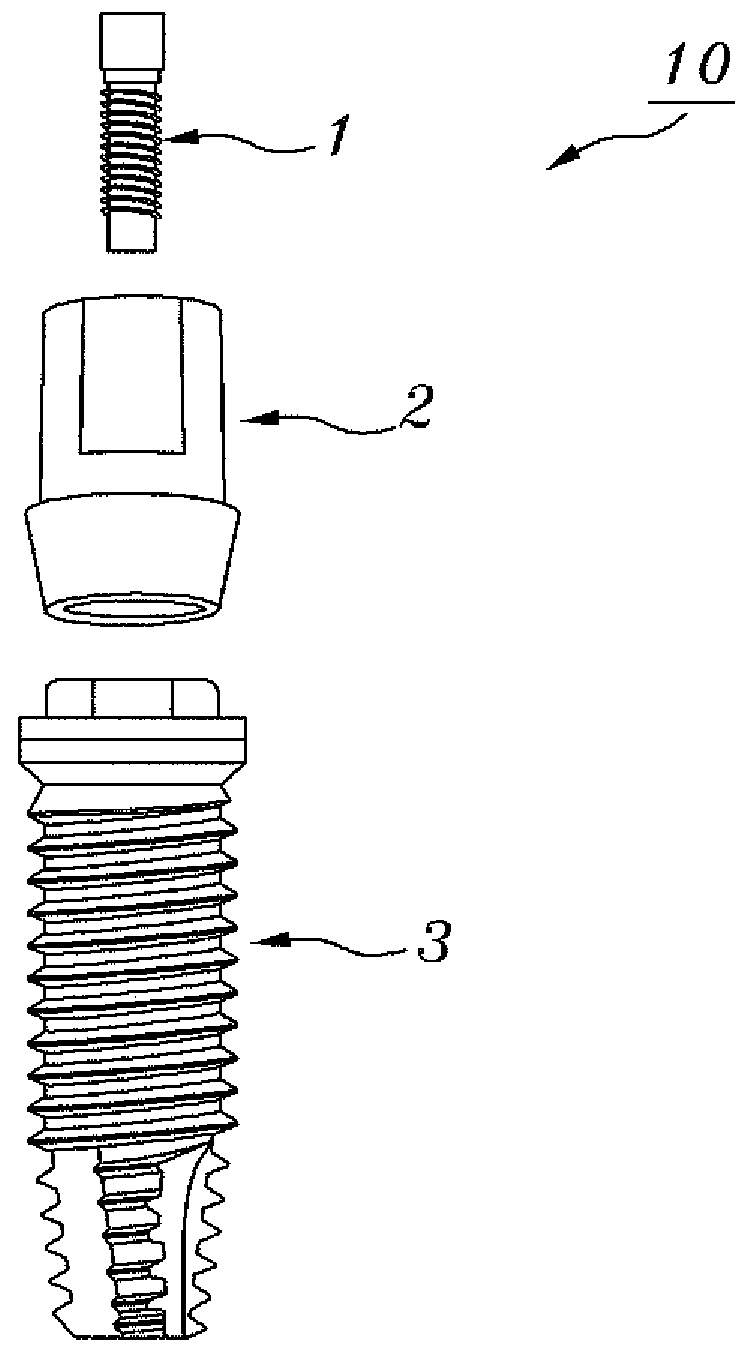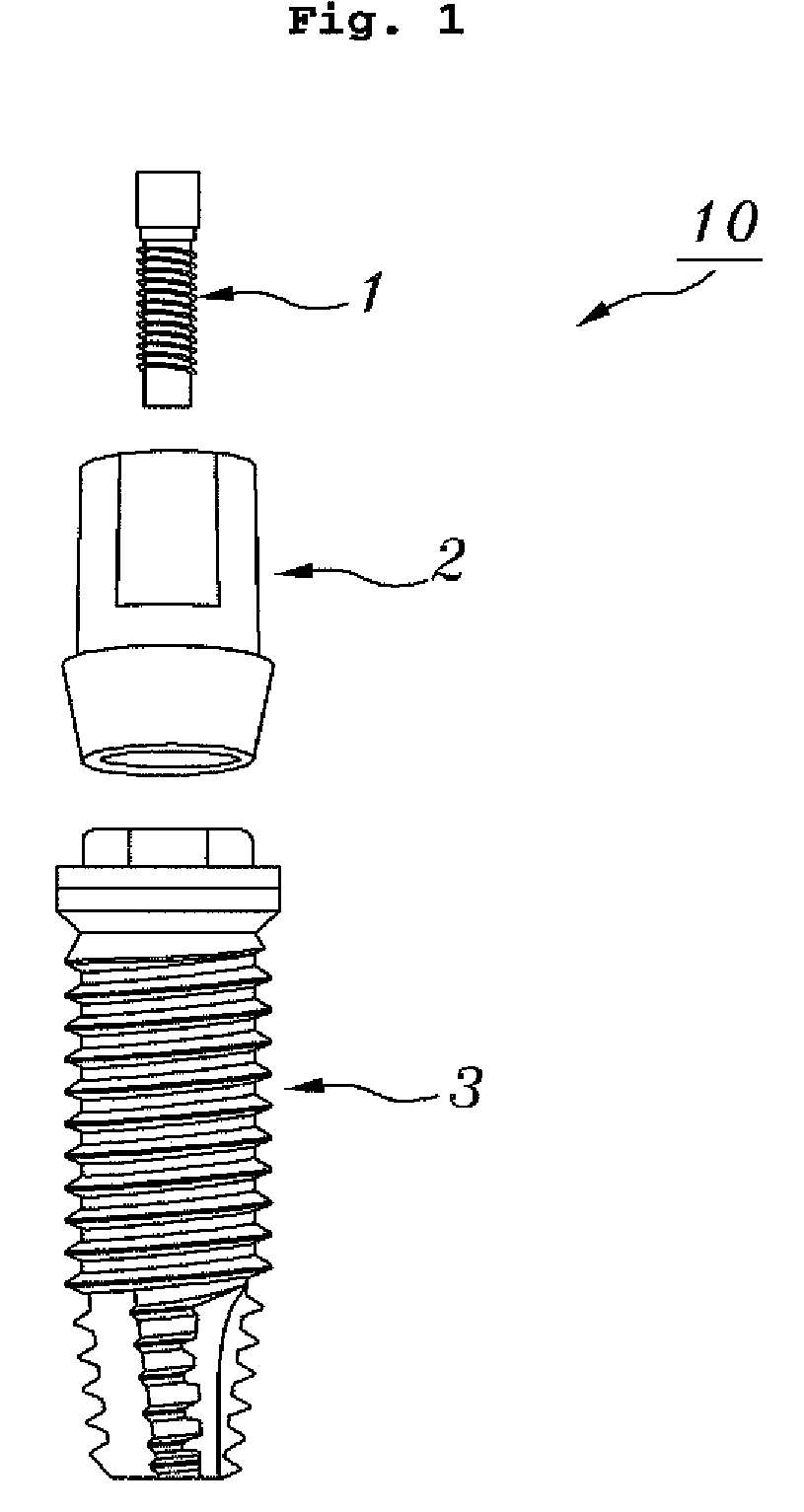Mini implant
a mini-implant and implant technology, applied in the field of mini-implants, can solve the problems of loss of tooth function, no longer usable coupling structure between fixture and abutment of permanent implants, socially unaffected in terms of outward appearance, etc., and achieve the effect of maximizing the utility of the mini-implant, facilitating replacement, and very efficient processing
- Summary
- Abstract
- Description
- Claims
- Application Information
AI Technical Summary
Benefits of technology
Problems solved by technology
Method used
Image
Examples
Embodiment Construction
[0032]Features and advantages of the present invention will be more clearly understood by the following detailed description of the present preferred embodiments by reference to the accompanying drawings. It is first noted that terms or words used herein should be construed as meanings or concepts corresponding with the technical spirit of the present invention, based on the principle that the inventor can appropriately define the concepts of the terms to best describe his own invention. Also, it should be understood that detailed descriptions of well-known functions and structures related to the present invention will be omitted so as not to unnecessarily obscure the important point of the present invention.
[0033]Hereinafter, specific embodiments of the present invention will be described in detail with reference to the accompanying drawings.
[0034]FIG. 4 is an exploded frontal perspective diagram of a mini implant according to the present invention, and FIG. 5 is a sectional diagra...
PUM
 Login to View More
Login to View More Abstract
Description
Claims
Application Information
 Login to View More
Login to View More - R&D
- Intellectual Property
- Life Sciences
- Materials
- Tech Scout
- Unparalleled Data Quality
- Higher Quality Content
- 60% Fewer Hallucinations
Browse by: Latest US Patents, China's latest patents, Technical Efficacy Thesaurus, Application Domain, Technology Topic, Popular Technical Reports.
© 2025 PatSnap. All rights reserved.Legal|Privacy policy|Modern Slavery Act Transparency Statement|Sitemap|About US| Contact US: help@patsnap.com



